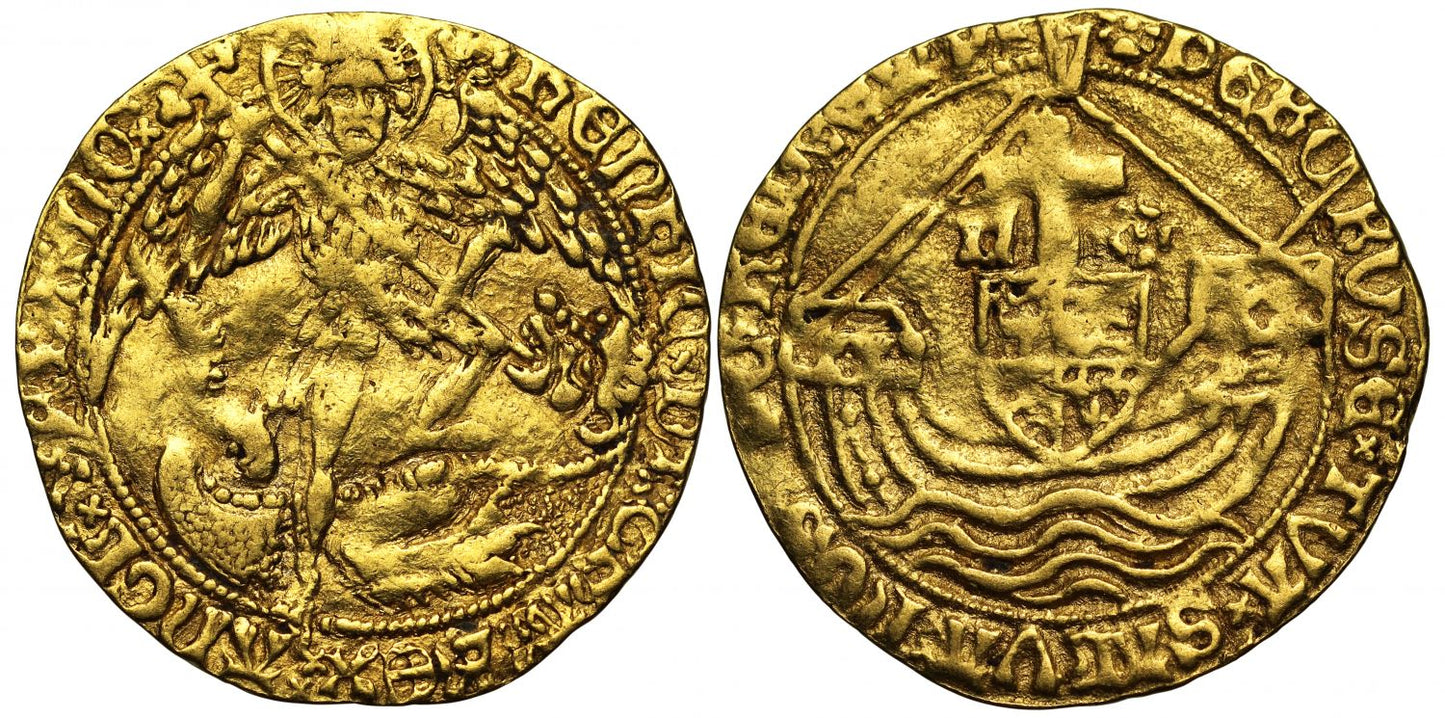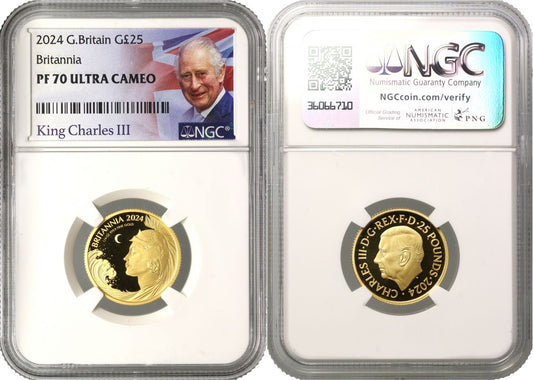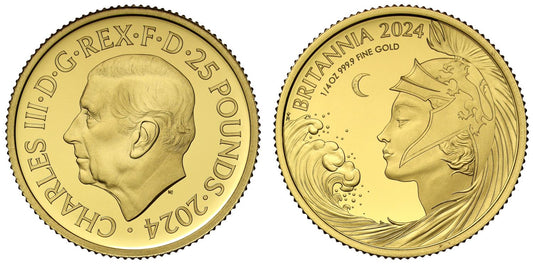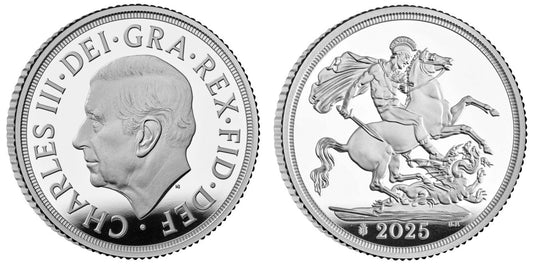FAQs
What makes a coin valuable?
I have coins to sell, what’s the next step?
How will my purchases be shipped?
What happens if I’m not entirely happy with my purchase?
Henry VII Angel, class I, mm lis dimidiated with rose / reverse halved sun & rose
Henry VII (1485-1509), gold Angel, class I, mule utilising a converted Richard III reverse die, St Michael killing dragon with lance, one foot on dragon, beaded circle surrounding, initial mark lis and rose dimidiated (1485-87), saltire stops and abbreviated legend both sides hEnRICx DIxx GRAxx REXxx AnGL'x Z FRAnCx, rev. ship sailing right, quartered shield upon hull, cross above, h to left possibly struck over R, rose to right, initial mark halved sun and rose, PER C RVSEmxx TVAx SALVAx nOS XPCx REDEmPT, 5.09g (Schneider 504/503; N.1694; S.2179/2180). Toned with some old dirt deposit in places, a little weak in parts as usual with this early issue of the reign, struck from a rusty reverse dies, otherwise very fine and very rare.
The abbreviated Latin legends translate as on the obverse "Henry by the Grace of God, King of England and France"; and on the reverse "By Thy cross, save us, O Christ, our Redeemer".
Only a small face value of gold was being struck at this period of time and as this piece eclipses two mint marks it probably falls into the early part of the issue of lis issuant from rose coins minted from the Summer of 1487 which equated to £7,763 worth of gold.
Henry Tudor was born at Pembroke Castle on 28thJanuary 1457 the only child of the 13 year old Margaret Beaufort, who was descended from the Lancastrian branch of the Plantagenet dynasty; and Edmund Tudor the first Earl of Richmond and half-brother of King Henry VI, who died three months before Henry was born rendering him fatherless. Henry spent fourteen years living in exile after Edward IV finally took the throne from Henry VI, living in Britanny under the protection of Duke Francis II. By 1483 Henry was the most senior living Lancastrian as other direct claimants had died, and through his grandfather Owen Tudor, he could trace Welsh heritage back to Cadwaldr the last Ancient British King. His mother Margaret started to actively promote Henry as an alternative to Richard III and Henry was pledged to marry Elizabeth of York at Rennes Cathedral on Christmas Day 1483, the eldest daughter of Edward IV and heir, as her brothers the Princes in the tower had disappeared. After an initial conspiracy from Britanny to oust Richard III was revealed, Henry fled to France to avoid extradition and raised support and an invasion force, which sailed in 1485 and landed at Mill Bay near Dale, Pembrokeshire and marched into England with his uncle Jasper Tudor and John Vere the 13thEarl of Oxford, amassing support and manpower all the way with between 5,000 and 6,000 soldiers. Intending to engage Richard as soon as possible who had reinforcements in Nottingham and Leicester, the two sides met at Bosworth Field on 22ndAugust 1485 and though outnumbered, Henry's forces proved victorious slaying Richard III and his key allies. Henry declared himself King by right of conquest retroactively from 21stAugust 1485, the day before the battle so those that fought for Richard could be found guilty of treason, and lands belonging to the same could be confiscated including all of Richards property. Henry spared Richard III's nephew and heir John de la Pole the Earl of Lincoln. Henry's coronation took place at Westminster Abbey on 30thOctober 1485, whereupon he issued an edict that any gentleman who swore featly to him not withstanding any prior attainder be secure in their property and person. Henry honoured the pledge to marry Elizabeth at York on 14thJanuary 1486 at Westminster Abbey in the hope of uniting the Yorkist and Lancastrian dynasties, as they were both third cousins and great great grandchildren of John of Gaunt. Henry next had parliament repeal the Titulus Regis issued by Richard III that had declared the children of Edward IV illegitimate, therefore legitimising his wife. It was not all plain sailing though as Henry faced several rebellions in the following dozen years, including the rebellion of the Stafford Brothers in 1486, abetted by Viscount Lovell which collapsed before fighting. Then in 1487 that led by the Earl of Lincoln promenading Lambert Simnel who claimed to be the Earl of Warwick, which first ignited in Ireland but was quenched at the Battle of Stoke with Lincoln killed. Henry forgave the Irish nobles involved and gave the boy Simnel a servant job in the Royal kitchen in charge of spit roasting meats. In 1490 another pretender appeared Perkin Warbeck, claiming to be Richard of Shrewsbury winning support of Margaret the Duchess of Burgundy, and attempted invasions of Ireland in 1491 and 1495 and persuading James IV of Scotland to invade England in 1496. In 1497 Warbeck was captured after landing in Cornwall with an invasion force and executed. William Stanley the Chamberlain of the Household was later accused of supporting Warbeck and executed as was the Earl of Warwick in 1499. Henry was otherwise noted for raising money from his subjects and supporters often on the pretext of whatever convenient reason and instead adding to his own coffers, and this attitude toward money to save rather than spend meant he was fiscally prudent as a monarch, stabilising the financial administration and keeping long term trusted financial advisers. Henry was also known for introducing the pound avoirdupois as standard weight and maintained peace overseas as well as the economic prosperity. This was shown numismatically with the introduction of the hammered gold Sovereign as the largest English denomination of the time, issued from 1489, which progressed through five types in this reign as the jewel in the crown of the coinage.
Henry had seven children with Elizabeth of York, three of which died as young children. His eldest son Arthur Prince of Wales died at the age of 15 six months after marrying Catherine of Aragon to whom he had been betrothed at the age of 11, from a "sweating sickness" which his wife also suffered from but survived. Henry was deeply upset at the death of his eldest son in 1502, but even more so, not much later on 11thFebruary 1503 when his wife Elizabeth passed away from a post child birth infection at the age of 37. Henry never did remarry though he had made half-hearted plans to do so for political reasons and he died of tuberculosis on 21stApril 1509 at Richmond Palace
FAQs
What makes a coin valuable?
I have coins to sell, what’s the next step?
How will my purchases be shipped?
What happens if I’m not entirely happy with my purchase?













